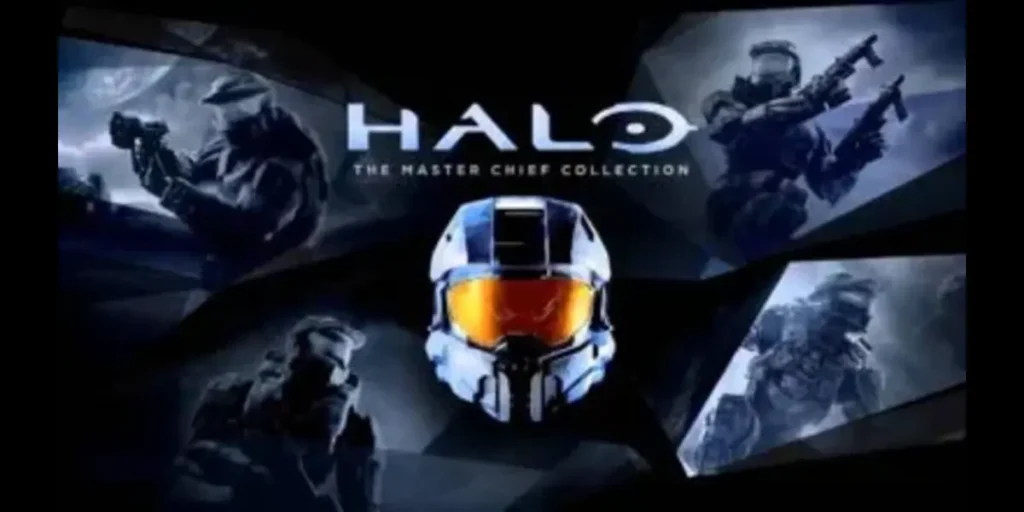Introduction halo (2003) game Icons Banners
In the autumn of 2003, a soft glow emanated from countless living rooms, dormitories, and basements. This glow wasn’t from the flickering lights of a holiday season, but from the screens of gamers engrossed in an epic battle across the universe. The release of “halo (2003) game icons banners” had not only revolutionized the first-person shooter genre but also introduced a visual language that became iconic. The game’s icons and banners were more than mere design elements; they were symbols that represented a new frontier in gaming culture.
As players navigated the futuristic landscapes of Halo, they were constantly guided and inspired by these meticulously crafted visuals. The energy shield icon, the unmistakable Spartan helmet, and the powerful insignia of the UNSC (United Nations Space Command) all contributed to a cohesive and immersive experience that defined the early 2000s gaming scene. These elements became embedded in the collective memory of gamers and are still celebrated today.
The Impact of Visuals in Halo: Combat Evolved
When “Halo: Combat Evolved” was released on November 15, 2001, it quickly became a critical and commercial success, selling over 5 million copies worldwide by 2003 . One of the key factors behind this success was the game’s groundbreaking visual design. The icons and banners used in Halo not only served functional purposes but also contributed significantly to the game’s storytelling and immersive experience.
Iconic Icons
The icons in halo (2003) game Icons Banners Combat Evolved” are memorable for their simplicity and effectiveness. For instance, the health and shield indicators are designed to provide players with immediate and clear information, essential for survival in the heat of battle. The energy shield icon, represented as a segmented circle, fills and depletes based on the player’s shield status, offering a quick visual cue that is easy to understand at a glance. This design choice was crucial in maintaining the fast-paced action that Halo is known for.
Similarly, the weapon icons were designed to be easily distinguishable, allowing players to switch weapons swiftly during combat. Each weapon icon is a simplified representation of the actual in-game weapon, ensuring that players can recognize them instantly. This level of clarity in icon design contributed to the overall fluidity of the gameplay experience.
Banners that Inspire
Banners and insignias play a vital role in halo (2003) game icons banners narrative and world-building. The UNSC banner, with its bold eagle emblem, represents the military authority fighting to protect humanity from the alien Covenant forces. This emblem is not only a mark of identity within the game but also serves to evoke a sense of duty and heroism among players.
Another notable banner is that of the Covenant, the primary antagonists in the game. Their alien insignias, often seen on vehicles and structures, create a stark contrast to the human designs, emphasizing the cultural and technological differences between the two factions. These visual distinctions help to deepen the player’s immersion into the game’s universe, making the conflict feel more tangible and compelling.

Statistical Significance
The impact of halo (2003) game Icons Banners Combat Evolved” on the gaming industry is evident in its sales figures and lasting popularity. By 2005, the game had sold over 6.43 million copies worldwide , and its influence extended beyond sales to include cultural and academic analyses. According to a study by the Entertainment Software Association, the visual design elements in games like Halo contribute significantly to player engagement and retention .
Moreover, a survey conducted by the Game Developers Conference in 2019 found that 82% of game developers believe that visual design, including icons and banners, plays a critical role in the success of a game . This statistic underscores the importance of the visual language that “Halo: Combat Evolved” helped to pioneer.
Legacy and Influence
The visual elements of “Halo: Combat Evolved” have left a lasting legacy in the gaming world. The game’s icons and banners have been referenced and homaged in numerous other titles, a testament to their iconic status. For example, the energy shield mechanic has been adopted and adapted in various forms across different games, highlighting the innovative nature of Halo’s design.
Additionally, fan communities continue to celebrate Halo’s visual design through fan art, cosplay, and modding. Websites like DeviantArt and Reddit feature countless tributes to the game’s iconic imagery, demonstrating its enduring appeal and influence.
Conclusion
The icons and banners of halo (2003) game Icons Banners Combat Evolved” are more than just visual elements; they are symbols that encapsulate the spirit and innovation of early 2000s gaming. Through their thoughtful design and impactful representation, these visuals have become an integral part of the Halo experience, inspiring a generation of gamers and developers alike. As we look back on the legacy of “Halo: Combat Evolved,” it is clear that its icons and banners played a pivotal role in shaping not only the game itself but also the broader landscape of video game design.
